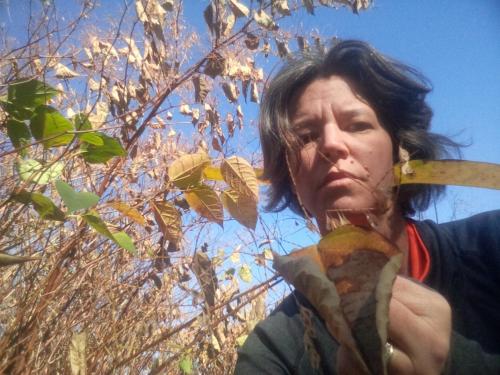Do not mow Japanese Knotweed
Japanese Knotweed, a destructive invader, will proliferate if mowed.

If you see a bamboo-like shrub with reddish stems at the edge of your yard, take note and do not cut, dig or mow it. It might be Japanese Knotweed, a plant that is invading areas of Michigan and poses threats to natural areas and developed property.
The plant spreads rapidly when it is mowed or pulled. If it gets close to a home or road it can sprout through foundations, roads, sidewalks and even damage sewers. Specialists rely on treating the shrub with specific herbicides to kill existing infestations and prevent it from spreading.
If you believe you may have seen this plant, you should visit the Michigan Invasive Species Information Network (MISIN) where once registered, you can file your report. I tried this myself in preparation for sharing the information in this article. I was pleased to find out that the website is easy to use, the process is not confusing and it is possible to place the exact location onto the map from my computer at home, without an address or the latitude and longitude. The online program is made possible in partnership with many conservation organizations and is maintained by Michigan State University.
The Stewardship Network is offering anyone, free of charge, an opportunity to ask questions and learn about Japanese Knotweed removal efforts underway in Mid-Michigan. The online webinar is from noon-1 p.m. (EST) on Wednesday Nov. 11, 2015. The Stewardship Network, provides free webinars on the second Wednesday of every month on land and water restoration efforts.
Some municipalities are beginning to allocate local tax dollars to address the most noxious invasive species. One such place in Michigan is Springfield Township, Michigan. Located along the I-75 corridor between Flint and Pontiac, Springfield Township is expanding treatment to include locations identified throughout the Township.

Author with a stand of Japanese Knotweed in Haslett, Michigan, on November 1, 2015. Photo credit: Monica Day.
Residents are asking local government to step in and provide treatment because the plants can become destructive by cracking foundations and pavement thereby degrading and lowering property values. If they catch fire they can burn extremely hot posing a fire risk as well. Management by local government can be the best approach because most homeowners are not familiar with the nuances of identification and management methods effective to eradicate the plants themselves. The most effective herbicides are not available over the counter.
Japanese Knotweed is notorious in the United Kingdom where, as reported by BBC News June 19, 2015, banks have denied mortgages to prospective homeowners on properties that contain the plant. Economic costs for Michigan property owners have not been calculated but if it were to spread throughout urban areas, it could threaten local Michigan economies.
Mowing or digging are particularly harmful management approaches because the plant is able to sprout from pieces of stems and roots. The Cornwall Knotweed Forum offers an easy to understand explanation of what is known about how it is spread. Emily Duthinh is the coordinator of the Oakland County Cooperative Invasive Species Management Area described by Michigan State University Extension. She cautions that if you should encounter a plant that has been disturbed you should carefully ensure that all pieces are disposed of in a landfill, not composted.
You can help protect your property values and public safety by reporting sightings and supporting removal efforts underway in your area.
Contact your county Michigan State University Extension office if you have trouble registering and reporting your sighting on MISIN or if you wish to find out additional resources available in your region to help identify and destroy Japanese Knotweed.



 Print
Print Email
Email




